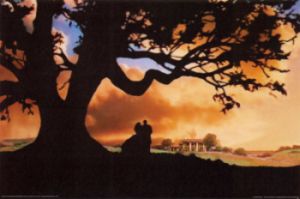 Speaking of that whole keep-up-with-the-traffic thing, one situation really screams out for it. Think of the last time you found yourself at the end of a long line of cars at a stop light. Didn’t you wish everybody would just go when the light turned green–I mean, hurry, even? Typically, the drivers at the front know they have a pretty good chance of getting through the light, so they don’t have any urgency about it. But how about the guys at the back? Wouldn’t it be karmicly appropriate for the ones at the front to think of the poor schlubs at the back? Well, of course it would.
Speaking of that whole keep-up-with-the-traffic thing, one situation really screams out for it. Think of the last time you found yourself at the end of a long line of cars at a stop light. Didn’t you wish everybody would just go when the light turned green–I mean, hurry, even? Typically, the drivers at the front know they have a pretty good chance of getting through the light, so they don’t have any urgency about it. But how about the guys at the back? Wouldn’t it be karmicly appropriate for the ones at the front to think of the poor schlubs at the back? Well, of course it would.
That’s sort of banal, I admit, but it gets more interesting. This simple, everyday situation actually involves all sorts of thoughts, beliefs, fears and associated mental/emotional human what-all. Take the simple calculation that every car-length that develops as the cars go through the light equals one more schlub who won’t be making it through. You’d think that would be simple math for most people, and it is in many major cities where the horns start honking three seconds before the light turns green, but it is not the case generally across the country. What happens more generally is that the first car goes, develops a few car-lengths of lead, and then the second car goes, and the pattern continues in its petty pace on down the line. We end up getting about one-half to one-third of the cars through as we would have with a little more adroit behavior–all this as people dimly try to recall some rule or other about following distance they learned in high school. What was it? Something about car lengths and miles per hour? Needless to say, the anal specificity of “one car-length for every ten miles per hour” has a way of leaving the normal person cold–or should I say, confused. Too much math, right? Let me break it down for you, though: If you’re hardly moving, you don’t need much following distance.
In the extreme, this slow-mo approach to driving through lights leads to another unfortunate occurrence–the dreaded sensor-in-the-street gotcha. In this scenario, even fewer people get through the light than might have otherwise, and this is because people don’t consider the fact that lights are set to turn red when it appears no more traffic needs to get through the light. Sensors in the streets oversee the process, and excessive gaps in the flow of traffic set them off. Continue reading →
 I am out of the memoir mode for the moment. I happened to see this quote from
I am out of the memoir mode for the moment. I happened to see this quote from 
 I remember only one event from my time there. It occurred in the cafeteria, which, like the rest of the school, was utterly silent and orderly at all times. The
I remember only one event from my time there. It occurred in the cafeteria, which, like the rest of the school, was utterly silent and orderly at all times. The  Kindergarten
Kindergarten  My mother had lived for a while in the south and had read a lot of
My mother had lived for a while in the south and had read a lot of  You’re driving along. You occupy an unyielding metal vehicle weighing a ton, more or less. You overtake a bicycle rider. You have a stripe of paint on the road to your left. You have a human being riding a bicycle on your right.
You’re driving along. You occupy an unyielding metal vehicle weighing a ton, more or less. You overtake a bicycle rider. You have a stripe of paint on the road to your left. You have a human being riding a bicycle on your right. The translation here, 21st century style, is, “I know I did something to inconvenience you, but I don’t really want to have an unpleasant exchange with you, and I certainly don’t want to change my behavior in any way, either, so I am saying this meaningless thing I learned in
The translation here, 21st century style, is, “I know I did something to inconvenience you, but I don’t really want to have an unpleasant exchange with you, and I certainly don’t want to change my behavior in any way, either, so I am saying this meaningless thing I learned in  Speaking of that whole keep-up-with-the-traffic thing, one situation really screams out for it. Think of the last time you found yourself at the end of a long line of cars at a
Speaking of that whole keep-up-with-the-traffic thing, one situation really screams out for it. Think of the last time you found yourself at the end of a long line of cars at a